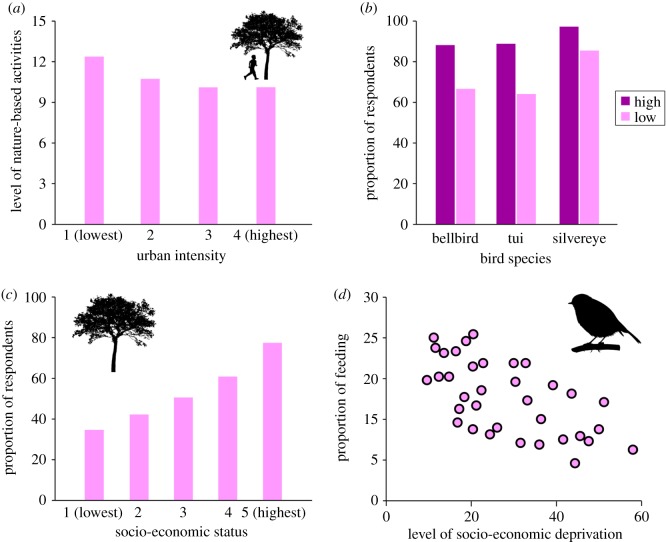Figure 5.
Examples of socio-economic dynamics of human–nature interactions. (a) Variation in level of elementary school children's immediate experiences with nature in areas of different urban intensity in China [62]. Levels of nature experiences were measured by the number of common nature-based activities (e.g. climbing trees, catching insects) in which each child participated (see [62] for more details). (b) The proportion of respondents from high and low socio-economic suburbs who fed birds and who reported seeing native birds (bellbird, tui, silvereye) in their gardens in Dunedin, New Zealand [63]. (c) Proportion of residents with trees that provide shade in the open spaces around their house across five socio-economic classes in Melbourne, Australia [64]. (d) Relationship between levels of socio-economic deprivation and the proportion of households providing food for birds in their domestic gardens in Sheffield, UK [35]. (Online version in colour.)

